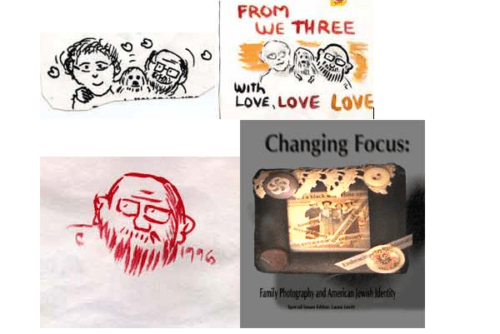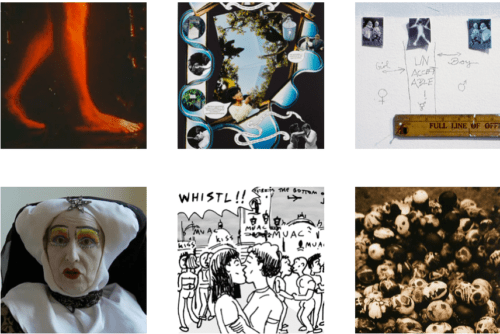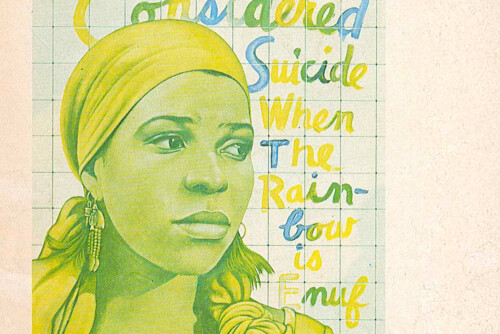Seeing My Brother’s Vision, Seeing Myself
Perhaps my brother’s place in the world is less unsettled than my father’s once was. He need not experience the everyday reminder that my father’s images on the walls of his house provide for him. My brother’s security is not about constant reassurance. He lives alone. My brother has no pact, no contract with a partner who insists on such display, and I am not his audience either. As long as his images get out occasionally, he is comfortable.
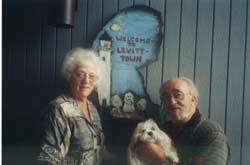
For my father the excess itself is reassuring. It is what marks a space as home. Such self-imagining serves increasingly as his signature. It also functions as a familial mark – the family picture as a group sign as in these cards and notes. Although sharing a familiar iconography and created in a similar fashion, my brother’s art does not produce the same effects or comfort for him or for any of us.
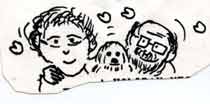
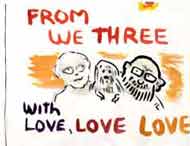
At first I thought that my own discomfort with my brother’s art was because of some of the disturbing distortions at the heart of so many of his works. I thought that my brother’s pictures were odd precisely because they did not produce the same effects my father’s works produce not only on me but my entire family. None of us rushed to cover our walls with these images, not even my mother. This was the unsettled conclusion I reached in the presentation I gave at Barnard. It was only after Susan Shapiro and Irena Klepfisz expressed their discomfort, not so much with my brother’s images, but with all of my father’s faces, that I began to reconsider my own perceptions.1 Susan told me she found my father’s proliferation of faces uncanny, a particularly charged and disturbing response from Susan who has done so much work on the Jewish uncanny.2 As I began to see, these are also unhomey images, familiar but also strange. Although I still find my father’s faces comforting, I am clearer about the oddness of my perceptions.
I hesitate to offer a psychological explanation for the excess that is my father’s art and my mother’s efforts at display. It seems a bit too simplistic. Instead, I want to argue that like so much of what I have written about my family, Jewishness and home, the excess around these self-portraits that are and are not overtly self-portraits and their display is another symptom of a larger, less peculiar project, the efforts of so many American Jews to feel at home.3 For my parents these efforts at self display and, in my mother’s case, the promotion of my father as artist have helped them feel not only safe and comfortable but accomplished, educated and cultured as Americans. In other words, these efforts remind them that they are exceptional and for this reason acceptable.4
As I have argued in my book, there is always already something unsettling about these efforts at self creation that keep producing this kind of excess. These kinds of performances are not so different from my grandmother’s ambivalent embrace of this country as her home. In the room where that photograph now resides, that ambivalence, my parents’ vision of the exception and my grandmother’s immigrant longings touch. Although I cannot say for sure that my father and mother remain unsettled, the labor of artistic production in its excess, and the excess expressed in the display of these images all suggest such a reading. And it is in this respect that I read this whole project, the production and display of these images, as Jewish.
As I see it, this is a generational Jewishness. Like my own arguments about home in my book, my brother’s paintings and drawings have also found other, less stable homes. Their place in the world is multiple and shifting. Moreover, they do not need always to be on display. As I thought again about my brother’s art after my presentation at Barnard, I began to make other connections.
Reading Svetlana Boym’s The Future of Nostalgia, I was struck by her notion of “diaspora intimacy” and connected it to my brother’s art and its display.5 It seems to me that my brother’s strange and strained figures have made peace with the world on other terms. Although they are estranged, they are okay with this. They seem to operate in a different economy, closer to what Boym describes in terms of the pleasure and surprise of diaspora intimacy, those moments when strangers meet and share a certain kind of knowing recognition, in some sense, the sharing of estrangement itself. For my brother there is in these public displays a certain recognition that although “The illusion of complete belonging has been shattered…. one discovers that there is still a lot to share. The foreign backdrop, the memory of past losses and recognition of transience do not obscure the shock of intimacy, but rather heighten the pleasure and intensity of surprise”(255).
Although my brother is not an immigrant and has not experienced the kinds of losses Boym writes about, his work expresses a certain playful recognition of transience and heightened appreciation for the surprise of any connection. When my brother’s works were last on display in the reading room of the Wilmington Public Library, he spoke to me about what it meant for him to be able to go there in the dead of winter and see the homeless men who gather there look at his paintings.
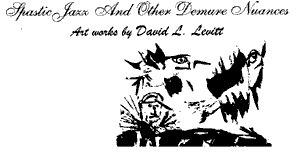
He enjoyed overhearing conversations between these men about his own strange characters, the figures who populate his art works. And, although the show was up for only a few weeks, these interactions made the whole exhibition that much more meaningful in a world where none of us is ever fully at home.6
- “Changing Focus: Family Photography and Jewish American Identity,” panel discussion, The Rennert Women in Judaism Forum, Barnard College, New York, New York, January 31, 2001. [↩]
- See for example, Susan Shapiro, “The Uncanny Jew: A Brief History of an Image,” Judaism, 46.1(Winter, 1997). Susan has been working for quite some time on a book on this topic and she has been kind enough to share chapters of that manuscript with me. We have been discussing the “uncanny” for years and it was her work that inspired my reading of the uncanny in the first chapter of Jews and Feminism. [↩]
- See my reading of the interiors of Larry Sultan’s parents’ homes for another, and somewhat different, example of the aesthetics of excess in “Picturing American Jews.” I also want to note that for my parents these activities have not lessened over the years. They have actually increased. My father’s latest creations are miniature images. The production as well as display of these more recent works has only become livelier. As my brother suggested to me, these little images have numerous advantages for my parents. Because they take up less space, they are easy to add to already crowded walls. They are also easier to make more quickly, allowing my father to increase his production. It should also be noted that for my parents being prolific is itself a virtue. Again, I thank my brother for encouraging me to consider these things. Telephone conversation with David Levitt, June 29, 2002. [↩]
- For an excellent account of this kind of Jewishness performed in terms of exceptionalness, see Adrienne Rich, “Split at the Root: An Essay on Jewish Identity (1982),” Blood, Bread, and Poetry: Selected Prose 1979-1985, (New York: W.W. Norton, 1986), 100-123. [↩]
- Svetlana Boym, The Future of Nostalgia (New York: Basic Books, 2001). [↩]
- In discussing this remembered conversation with my brother, he was less convinced of this reading. In fact, he considered this original discussion more an attempt on his part to relate something about his work to me in terms that I would find familiar. He explained that it may have been an effort on his part to help me better appreciate his show. Even if that was the case, it worked. It continues to speak to me. And, as he pointed out, this is not what most interests him in producing and displaying his art work. That is a story only he can tell. What I have suggested here is a partial explanation, something we share as siblings having grown up in our parents’ home. Telephone conversation with David Levitt, June 29, 2002. [↩]
